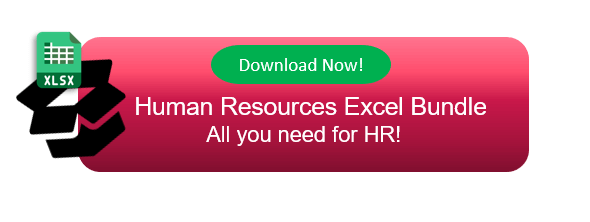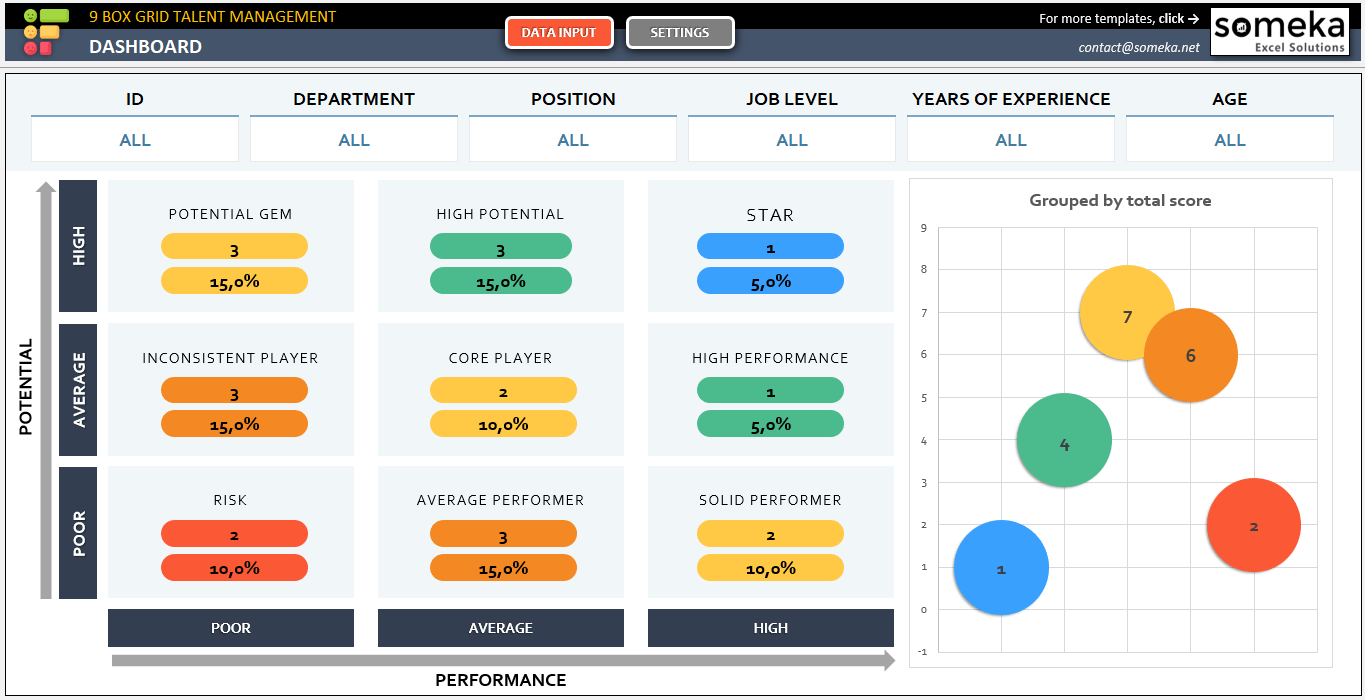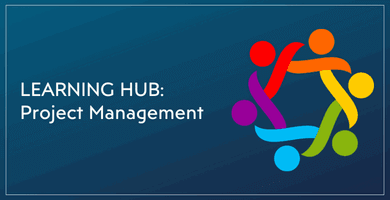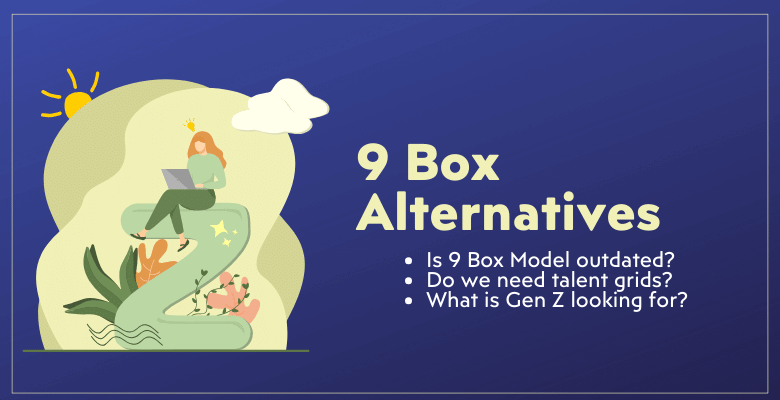
Is Grid Model Outdated? What are the Alternatives of 9 Box Grid Talent Assessment?
Because talent management is always changing, companies are always looking for new and different ways to evaluate, develop, and promote their employees. If you want to go beyond the standard 9-box model, which is a common way to evaluate talent, one area to look into is 9 Box Alternatives.
The 9-box grid has been used for a long time in talent management and has been very helpful in putting workers into groups based on their performance and potential. But as workplaces become more diverse and active, it’s important to think about whether this traditional approach works best for all businesses.
Table Of Content
1. Why Move On from the 9-Box?
2. Gen Z and New Work Environment
3. Nine Box Grid Alternatives
4. How to Bring Objectivity to Talent Conversations?
5. How to find future leaders in new era?
6. Why is 9 Box Model still used?
7. Last Words
8. FAQ’s
As we explore the changing landscape of talent assessment, we’ll evaluate why to continue with grid models and why to switch to other solutions.
Let’s go on this life-changing journey together to find 9 Box Alternatives that can make your company’s talent plan even better.
1. Why Move On from the 9-Box?
The 9-Box model for evaluating ability has been used in talent management for many years. But as businesses face new problems and the business world changes, it’s important to see if this old way of doing things still works or if they need to be replaced with something else. We’ll talk about why some businesses are thinking about getting rid of the 9-Box model in this part.
1.1. A Look Back at the 9-Box Model
This is why people want to look for other options. Let’s quickly go over the past of the 9-Box model.
A global management consulting company called McKinsey & Company came up with this framework as a way to rate and group employees based on their performance and potential. It was introduced back in early 1970s. The GE-McKinsey nine-box framework was one of the best solutions to multibusiness corporates trying to overcome the complexity. It made it easy and clear to find people with a lot of potential and make choices about talent.
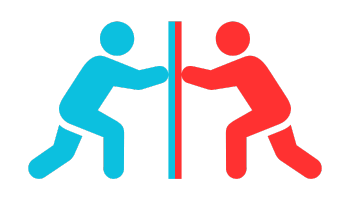
1.2. Is the 9-Box Model Out of Date?
One of the main reasons companies are looking at alternatives to the 9-Box plan is that they think it is outdated. There have been big changes in the business world, like the rise of online work, the gig economy, and the entry of Generation Z into the workforce.
Because of these changes, the game may not be able to handle the new dynamics that the standard 9-Box grid can handle.
 10. What Are 9 Box Alternatives?
10. What Are 9 Box Alternatives?
You’ve probably heard of the expression “think out of nine box” in human resources and talent management successions. This expression leads to think alternative models of this long-lived model.
1.3. Common 9 Box Pitfalls
Even though the 9-Box type has done its job well, it does have some problems. Some common mistakes are making talent evaluation too easy, letting bias affect places, and not being able to change with the needs of the business. Because of these flaws, companies are looking for more adaptable and accurate ways to handle their employees.
Let’s summarize the cons of 9 box:
- Limits workers to a certain label
- Easily influenced by bias and opinion
- Not enough measurements of real data
- Office politics can lead to bad use of the tool.
- Having openness can cause problems between employees.
1.4. Do We Even Need Talent Grids? What Are 9 Box Alternatives?
We need to ask ourselves if we even need talent models like the 9-Box in today’s workplace, where things change so quickly. With more improved technology, data analytics, and knowledge of how people act, alternatives to traditional ways of evaluating talent have become more popular.
These alternatives offer greater flexibility and accuracy in the evaluation process. Organizations can focus on each person’s unique skills and potential with these alternatives instead of putting them in predefined boxes.
– A screenshot from Someka’s 9 Box Grid Excel Template –
We will talk about some of these new, different ways of managing talent that are becoming more popular in the parts that follow.
2. Gen Z and New Work Environment
Modern workers are going through a big change because of things like new technologies, shifting demographics, and changing workplace relations. People from Generation Z, who were born between the mid-1990s and early 2010s, are coming into the workforce with their own set of traits and standards. In this part, we’ll talk about how the rise of Gen Z and changes in the workplace are making people look for new ways to evaluate talent.
The office isn’t the only place where people work anymore. It’s now common to work from home, do gig economy jobs, and make casual plans. People in Gen Z have grown up with smartphones, instant messaging, and easy access to information. They are often called digital natives. Their tastes and beliefs are different from those of earlier generations, so businesses need to change in order to attract and keep this new generation of talent.

When Gen Z employees start working, they want to do work that has a reason, gives them chances to improve their skills, and makes them want to work together and come up with new ideas. They want to keep learning and getting feedback.
The old 9-Box plan, which was made for a different time, might not fully fit with these new trends in the workplace. Now, companies are looking into new ways to test skills that are more in line with what Gen Z wants. These alternatives focus on giving employees feedback in real time, encouraging them to work together, and giving them control over their job growth.
3. Nine Box Grid Alternatives
Companies are looking for alternatives to the standard 9-Box model for talent management because they want more accurate and flexible ways to do it. These alternatives give us a new way to look at evaluating and developing ability. In this section, we’ll look at some alternatives to the 9-Box grid, each of which is meant to help with a different part of identifying and developing ability.
Is There a Better Way?
Before we talk about specific options, we need to know if there is a better way to find and handle talent. The 9-Box type has some good points, but it’s not the best choice for everyone. Every business and group has its own needs, and different methods may help them reach their goals more effectively.
Success Circles:
As an alternative, Success Circles focus on making small groups of peers within the company. It’s possible for workers to work together, learn, and help each other grow through these circles. Success Circles focus on the growth and progress of the whole group.
Individual Development Plans:
Company can choose Individual Development Plans (IDPs) instead of putting workers into set groups. IDPs are personalized plans for an employee’s job growth that show their strengths and areas where they can improve.
Combine engagement, performance, and development:
Some companies are moving toward a more complete method that combines planning for employee development, evaluating employee engagement, and evaluating employee performance. This unified method gives a fuller picture of what an employee does and what they can do.
Personal succession planning:
With personal succession planning, the focus moves from general talent pools to personalized plans for how to fill key roles. It means finding and developing people whose skills and abilities make them good candidates to take over certain jobs.
Real-time succession planning:
With real-time succession planning, succession plans are constantly checked and changed as the needs of the company change. This flexible method makes sure that the right people are always ready to take on important tasks.
360-degree feedback:
Companies don’t have to rely on boss evaluations alone; they can use 360-degree feedback as well. This method of getting feedback from multiple sources (peers, coworkers, and managers) gives a more complete picture of an employee’s work and potential.

Employee scorecard:
An employee’s talents, accomplishments, and growth over time can be tracked with an employee scorecard. They show how an employee is doing and what they can do in the future.
Alternative Grid Numbers:
There is a 16-box talent matrix that is more detailed than the standard 9-box model because it has 16 boxes. It gives you a fuller picture of an employee’s work and possibilities.
Jack Welch’s Performance-Values Matrix:
This matrix sorts workers into four groups based on their performance and values: top performers, values violators, solid citizens, and deadwood. It stresses how important it is to match values with results.
Continuous Feedback and Coaching
Another powerful option is to stress ongoing feedback and coaching as part of a process of continuous growth. This method encourages workers and managers to talk to each other on a regular basis, which leads to growth and improvement.
Strengths-Based Development:
Some companies put a lot of emphasis on strengths-based development, which means using workers’ natural skills and talents. This method tries to help people reach their full potential by matching their jobs and responsibilities with their strengths.
Talent marketplaces:
These are places where employees can show off their skills, hobbies, and goals within their companies. This lets talented people move around and helps workers find jobs that fit their career goals.
Behavioral Assessments:
Behavioral assessments, like personality tests, can tell you a lot about a worker’s traits and interests. These tests can help with making plans for growth and improving how the team works together.
Team-Based Assessment:
Some companies test ability at the team level as well as the individual level. This way of doing things looks at how people on a team work together and how teams help the business reach its goals.
These options give companies more freedom and customization when it comes to evaluating and developing talent. For each organization, the best approach will rely on its own needs, goals, and culture. We will talk more about the pros and cons of these alternatives in the parts that follow.
4. How to Bring Objectivity to Talent Conversations?
The most important part of any talent management plan is having good conversations with talent. For businesses to successfully use alternative ways to evaluate talent, they need to create a space where people are curious, brave, and objective during these important conversations.

Let’s discuss how we can bring objectivity, curiosity and courage to talent reviews:
Curiosity: The Need to Discover
Innovation and growth are driven by curiosity. Get workers and leaders to ask questions and look into what’s possible. Instead of guessing about someone’s skills, you should encourage questions that come from curiosity. For instance, instead of thinking an employee doesn’t have certain skills, you could ask them what new skills they’d like to learn and how the company can help them.
Courage: Being open to honest conversations
When talking about ability, it’s important to be honest and open. Leaders should be brave enough to give honest comments and talk openly about areas where people can improve. But employees should also feel free to talk about their job goals and how they’d like to grow and be supported. Setting up a safe place for these talks is very important.
Objectivity: Finding a Balance Between Personal Feelings
When possible, talks about talent should be based on facts and evaluations. Performance metrics, peer feedback, and individual growth plans are often used together in other ways to evaluate talent.
Companies can make sure that talent reviews are fair, focused on growth, and in line with both individual and company goals by encouraging curiosity, courage, and objectivity in the talks that happen.
5. How to find future leaders in new era?
Today’s business world moves quickly and is always changing, so finding the next leaders is a crucial strategic necessity. We’ll talk about how companies can change the way they test ability to find and develop the leaders of tomorrow.
- Have a growth mindset: Encourage your workers to see their jobs as journeys where they can keep learning and growing.
- Not just performance, but also potential: Although performance is an important indicator, it’s also important to look at a person’s ability.
- Success Planning: Make programs to help people become better leaders.
- Investing in leadership development: It is a smart way to train the leaders of tomorrow.
- Mentoring and coaching: As a leader, you need mentorship and teaching more than anything else. Encourage the organization’s more experienced leaders to help guide and teach new talent.
- Insights based on data: Talent analytics can help you find high-potential workers by looking at their performance, how fast they’re growing, and how well they fit with your company’s values and goals.
- Boost diversity: Diversity in leadership is important for coming up with new ideas and making good decisions. Make sure that programs for leadership growth encourage diversity and inclusion.
- Encourage people to set goals and aspirations: Have conversations with your workers about their leadership and career goals.
Using these strategies in hiring and developing talent will help companies find and train future leaders who are ready to take on the challenges and take advantage of the possibilities of the new era.
We’ll talk about why the 9-Box model is still used even though there are more modern ways to evaluate talent in the next part.
6. Why is 9 Box Model still used?
It’s normal to wonder why the traditional 9-Box model is still useful in a time when there are so many other ways to evaluate talent. This part goes into more detail about why it’s still so popular in the field of talent management.
Although it has been more than five decades, people are still using 9 box grid format. This is no surprise! Let’s summarize some of the most important pros of Nine Box Grids:
- Simplicity and Clarity: One of the main reasons the 9-Box model is still used is that it is easy to understand.
- Established Framework: The 9-Box type has been around for a long time and is used in many fields. So it’s easy for many HR workers and leaders to use.
- Integration with Performance Management: The 9-Box model works with performance management tools without any problems.
- Alignment with Organizational Goals: The 9-Box model can be changed to fit the goals and values of a specific company.
- Ease of Implementation: Most of the time, putting the 9-Box model into action doesn’t take a lot of training or expensive technology.
- Taking Culture Into Account: In some places of work, the 9-Box model fits in with the mindset and style of leadership. For instance, it might work well with a hierarchical management system that needs to make clear distinctions between performance and potential.
- Complementing Alternative Methods: Instead of getting rid of the 9-Box model, many companies choose to use it along with other ways to evaluate ability. Because of this method, they can get the best of both traditional and modern ways of doing things.
Other approaches can give you useful information and more options, but the 9-Box model’s long-lasting success shows how well it works as a basic tool for managing talent.
7. Last Words
9 Box Model is a very old model developed in 1970s. Of course everything changed since then. That’s why people suspect if it is outdated? But on the other hand, it’s an established model and still very common among corporates.
It’s important to evaluate the needs of your own business and employees before deciding on the talent management policy. We recommend that instead of totally getting rid of grid models, you should be aware of the downsides of this format and integrate it to other approaches.
If you’re looking for a 9 Box tool to ease your process, we have prepared a ready solution for you:
– This Dashboard is from 9 Box Grid Talent Management Template in Excel by Someka –
8. FAQs for 9 Box Alternatives
What can I use instead of a 9 box?
Instead of a 9 box, organizations can consider alternative talent assessment methods, such as Success Circles, Individual Development Plans, 360-Degree Feedback, Employee Scorecards, and Behavioral Assessments. These alternatives offer diverse approaches to evaluating and developing talent beyond the traditional 9-box grid.
Are 9 box grids outdated?
While the 9-box grid has a long history and remains a valuable tool in talent management, some argue that it may be considered somewhat outdated in the face of newer, more dynamic talent assessment approaches. However, its continued relevance depends on an organization’s specific needs, culture, and goals.
What are the disadvantages of the 9 box grid?
The 9-box grid, like any talent assessment method, has its disadvantages. Common drawbacks include its potential for oversimplification, subjectivity, and a lack of focus on individual development. Additionally, it may not fully capture the complexity of modern workplaces and diverse talent.
What is a talent matrix?
A talent matrix is a structured framework used in talent assessment and management. It typically involves categorizing employees based on their performance and potential. The matrix helps organizations identify high-potential individuals and make informed decisions regarding talent development and succession planning. It can take various forms, including the 9-box grid and other models tailored to an organization’s needs.
Recommended Readings:

